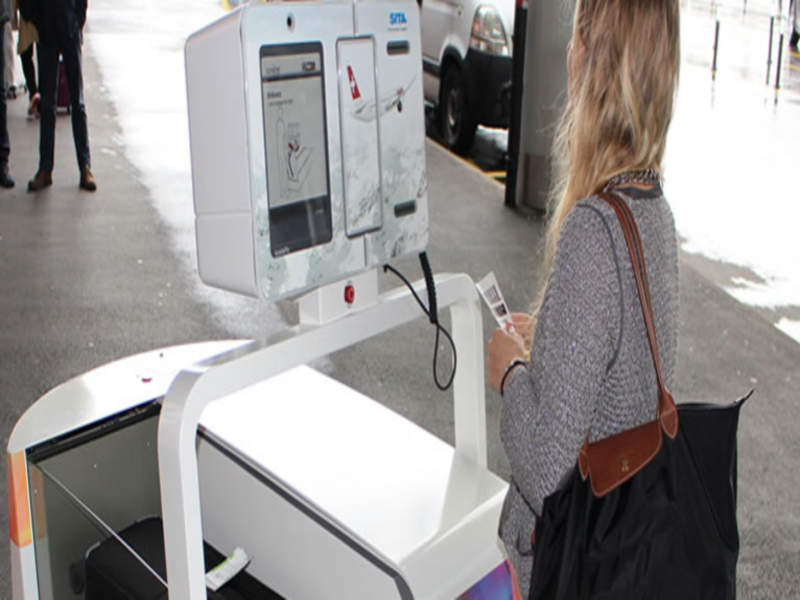

SITA’s new baggage robot arrives at Brazil’s Tom Jobim International Airport
Global information technology (IT) provider SITA’s latest baggage robot, Leo, arrived at Tom Jobim International Airport in Rio de Janeiro, Brazil.

Discover B2B Marketing That Performs
Combine business intelligence and editorial excellence to reach engaged professionals across 36 leading media platforms.
Coinciding with the International Brazil Air Show (IBAS), which was expected to draw more than 80,000 visitors, the robot’s arrival at the airport will help the passengers check in their bags.
Leo was sent to the Brazilian airport to provide insights into the future of baggage handling technology at airports, which is currently being studied by SITA Lab, the company’s technology research team.
Indra to upgrade seven air traffic surveillance radars in Central America
Global consulting and technology company Indra received a new contract from the Central American Corporation for Air Navigation Services (COCESNA) to upgrade seven air traffic surveillance radars in Central America.
With an aim to boost safety in Central American airports, Indra will digitise the air traffic surveillance systems distributed in four countries and the Cayman Islands.

US Tariffs are shifting - will you react or anticipate?
Don’t let policy changes catch you off guard. Stay proactive with real-time data and expert analysis.
By GlobalDataThe seven radars are situated in Monte Crudo and Dixon Hill in Honduras, Puerto Cabezas in Nicaragua, Mata de Caña and Poas Volcano in Costa Rica, Cerro Santiago in Guatemala, and Grand Cayman in the Cayman Islands.
British Airways launches automated biometric technology at Heathrow Airport

British Airways launched new self-service boarding gates at Heathrow Airport to provide an easier, smoother boarding process for passengers.
The airline was the first in the UK to introduce automated biometric technology throughout the airport.
Introduced after a successful trial conducted in June 2016, the airline's first three self-service boarding gates have opened for UK domestic flights departing from Heathrow Terminal V.
FAA to release facility maps for drone operators
The US Federal Aviation Administration (FAA) planned to release the first set of unmanned aircraft systems (UAS) facility maps that will highlight areas and altitudes near airports where drones can operate safely.
The facility maps will help drone operators improve the quality of their Part 107 airspace authorisation requests, enabling FAA to process these requests more quickly.
Remote pilots can refer to the maps when completing their airspace authorisation applications and will be able to customise their requests to align with locations and altitudes that the maps indicate are likely to be approved for small UAS operations.
Gatwick becomes first single runway airport to hit 44 million annual passengers mark

London Gatwick became the first airport with a single runway to have been visited by more than 44 million passengers a year.
Driven by increased flight services on long-haul routes, Gatwick Airport had achieved 49 consecutive months of traffic growth.
In March, the airport saw more than 3.3 million passengers passing through its terminals, with an 8.4% rise in passenger volumes, compared to the same month last year.
NATS launches new flight-tracking app with 3D view of UK airspace
The UK’s air navigation service provider (ANSP), NATS, launched a new flight-tracking app that shows live air traffic movements worldwide.
Named Airspace Explorer, the new flight-tracking app uses real radar data to track aircraft flying across UK airspace.
The precise coverage provided by the data allows air traffic controllers to safely guide approximately 6,500 aircraft flying through the skies every day.
Fraport Greece to take control of 14 regional airports in Greece

Fraport Greece signed a concession agreement to take control of 14 regional airports in Greece, as part of the country's privatisation programme.
The company paid €1.234bn into Greek's state-owned Hellenic Republic Asset Development Fund (HRADF) in order to take over the management and development of the airports for the next 40 years.
The 14 airports being privatised include Aktion, Kavala, Thessaloniki, Kerkyra / Corfu, Chania / Crete, Kefalonia , Kos, Mytilene / Lesvos, Mykonos, Rhodes, Samos, Santorini, Skiathos and Zakynthos.
Irish airports register 10.3% growth in passenger volumes in 2016
A new statistical release by Central Statistics Office (CSO) revealed that Irish airports handled 32.83 million passengers in 2016, marking a 10.3% increase compared to 2015.
Last year, passenger volumes increased in all Irish airports except Waterford, with Dublin Airport accounting for 84.6% of all air passenger numbers.
Around 3.1 million additional passengers travelled through the gates of Irish airports in 2016, 2.8 million (92%) of which passed through Dublin Airport.
Oslo Airport completes terminal building expansion
Norway's Oslo Airport completed the 115,000m² expansion of its existing terminal building.
Designed by Nordic-Office of Architecture, the new terminal now features sustainability practices, a new 300m pier, and an upgraded train station at the airport's centre.
The upgrade of the train station was expected to allow 70% of all passengers to access the airport using public transport.
FAA and Aireon conduct space-based ADS-B technology flight test
The US Federal Aviation Administration (FAA) and Aireon successfully conducted the flight test of space-based automatic dependent surveillance-broadcast (ADS-B) technology.
The test was carried out to collect ADS-B data to be used as part of a larger validation effort evaluating the system's capability from low-earth orbit.
To conduct the flight test, the FAA deployed its specially-equipped ‘flying laboratory’ Bombardier jet, N47, with three Aireon payloads available to receive data.





